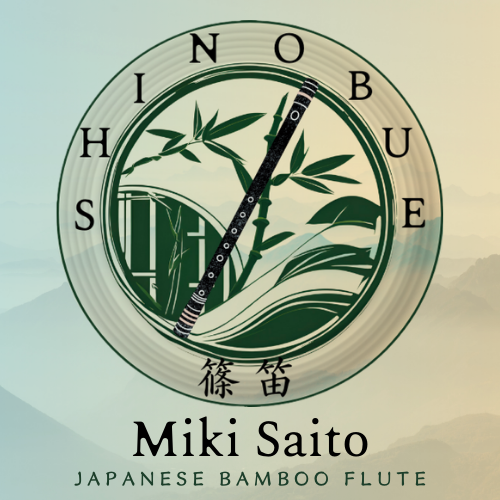Answering common "hon choshi" questions
"What in the world is 'hon choshi', anyway?"
The term "Hon Choshi" refers to the Western keys (like C major or D major) that a shinobue is tuned to or that resembles its sound. Did you know there are 12 different hon choshis in shinobue? Below, you'll find all the standard hon choshis and the keys they match up with.
1 (一)hon choshi: F major
2 (二)hon choshi: G flat (Gb) major
3 (三)hon choshi: G major
4 (四)hon choshi: A flat (Ab) major
5 (五)hon choshi: A major
6 (六)hon choshi: B flat (Bb) major
7 (七)hon choshi: B major
8 (八)hon choshi: C major
9 (九)hon choshi: D flat (Db) major
10 (十)hon choshi: D major
11 (十一)hon choshi: E flat (Eb) major
12 (十二)hon choshi: E major
The lower the number of hon choshi, the larger the flutes and the lower the pitches produced.
"Do I have to have them all?"
No, you don't need to. I do not have all the hon choshis either. I have from 1 to 8 hon choshi, but I do not have 9 through 12 because I am not a big fan of smaller flutes.
"Does that mean you cannot play any music in Db, D, Eb or E major?"
That is incorrect. I can still play those keys using the shinobues I have because:
The shinobue can play in keys other than the indicated one!
For example, the 8 hon choshi sounds like C major. However, I can easily play F major and G major music with the 8 hon choshi shinobue because C, F, and G major are closely related keys. I won’t delve into the details of music theory to explain their relationships, but it's important to know that you can play multiple keys on one shinobue.
"I'm just starting out. Which hon choshi should I buy?"
Most beginners start with a 6, 7, or 8 hon choshi shinobue. If you have small hands or thin fingers, I recommend the 8 hon choshi. This hon choshi is also a good choice if you plan to play alongside a pianist, as it can match to C major, an easy key for pianists to play in. You can take a look at Suzuki 6, 7, 8 hon choshi beginner shinobues here.
The 3 hon choshi is another common hon choshi, but I do not recommend it for beginners. It is larger than most other shinobues and requires more skill in covering the holes, as well as greater breath support. Producing a beautiful sound on it can be more challenging. Therefore, it's best to avoid any size lower than the 6 hon choshi until you gain more experience.
"I looked at your website and I can't find a lot of sheet music for my hon choshi."
As long as you are using the fingering number and not the Western notation for your notes,
You can use ANY hon choshi to play my sheet music!
For example, this sheet music for "Takeda no Komori Uta" says it's for 6 hon choshi.
But as long as you use the fingering numbers indicated by both regular numbers and kanji under the notes, you can use ANY hon choshi (not just 6 hon choshi), and the melody will sound like "Takeda no Komoriuta." This applies to all the songs!
Then, why did I use "6 hon choshi"? Because the Western notation shows the pitches when you play this song in 6 hon choshi.
Why not just drop the Western notation? Because it effectively indicates the rhythm. So you can use the Western notation to understand the rhythm, but you don't need to pay attention to the pitches of the Western notation, especially if you're playing the song by yourself, without any instrumentalists or an audio track. Just use the finger numbers. It doesn’t matter which hon choshi you use to play this song; it will still sound like "Takeda no Komoriuta."
So feel free to play all the songs you find on my website using whatever hon choshi you have!
"Is there a price difference between various hon choshis?"
Typically, larger flutes are more expensive, making a 1 hon choshi the costliest option among most brands, though prices vary by specific shinobue.
"I have a song I want to play. How can I find out which hon choshi I should use?"
Finding the right hon choshi for a specific song isn't an easy task. It requires time and skill to determine which hon choshi works best. However, I teach many of my students how to identify the right hon choshi, making it possible to learn this skill even without a strong music background. If you are interested in taking lessons, check out this page.
If you want to know more about hon choshi, watch these hon choshi videos!
I hope this article cleared up the mystery of hon choshi! If you have any additional questions, please feel free to email me!

